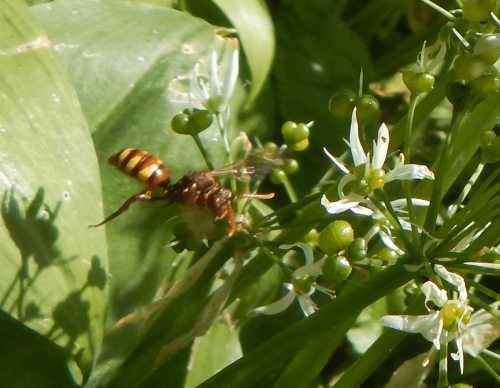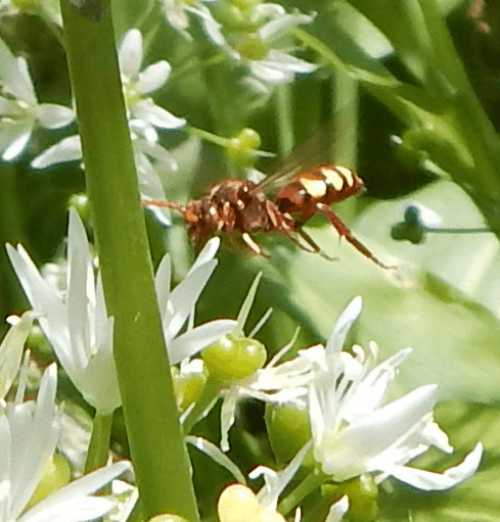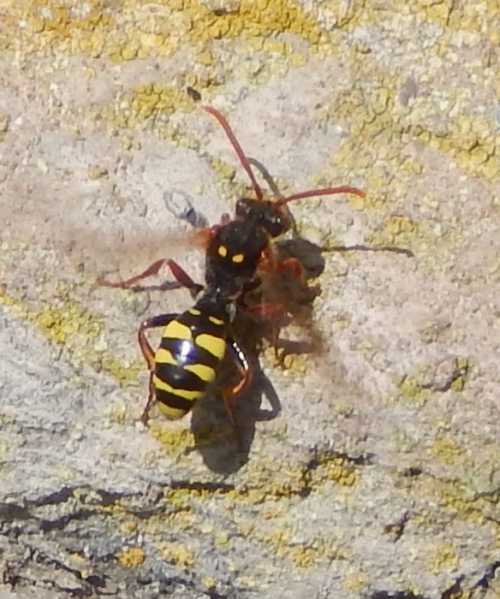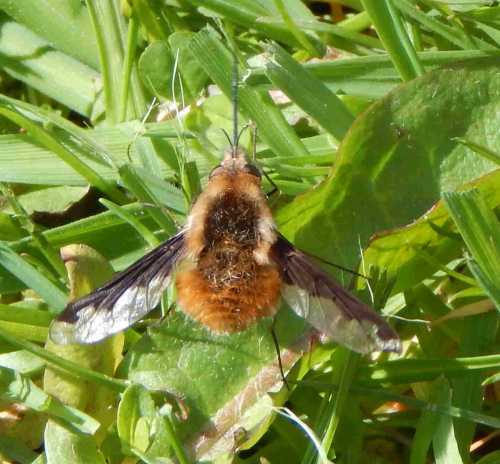Nomada panzeri -
Panzer's Nomad Bee
It was May when I took the following photographs of the Panzer's nomad bee - Nomada panzeri.
The location was a wooded area on the outer edge of a country estate I was visiting for a day out.
 Panzer's nomad bee - Nomada panzeri in flight.
Panzer's nomad bee - Nomada panzeri in flight.Detecting Panzer's Nomad Bee - Nomada panzeri
The weather was lovely: the sun shone through the trees and bathed the wooded clearings in a comfortable, happy sunlight. Patches of wild garlic, various umbellifers, nettles and other wildflowers were buzzing and fluttering with pollinators.
It was the ideal kind of environment for Panzer's nomad bee, and when I saw it, I was not surprised to see one of its known hosts, Andrena fucata - commonly known as the painted mining bee - around the same area. Andrena fucata also favours woodland areas and woodland clearings where there are patches of ground to accommodate nest burrows.
One of the challenges I had on the day was taking a quality photograph.
I managed to snap a few pictures whilst the bee was in flight: a slow, gliding flight with legs splayed out to the sides.
 Nomada panzer has a slow, gliding flight with legs splayed out to the sides.
Nomada panzer has a slow, gliding flight with legs splayed out to the sides.
In general I find it easier to take photographs of these bees whilst they are lurking around the entrances of the target host. At that point, they are stationary, watching, waiting.
On this occasion however, this particular Nomada panzeri was busy foraging. I found it was rather easily disturbed from the task, and therefore, my camera wasn't quick enough to get the quality photographs I would have liked - one of my ongoing problems I'm afraid.
Nomada panzeri flight season
Panzer's nomad bee is univoltine, and may be seen from March to June or July.
Other target hosts
Like all nomad bee species, the Panzer's nomad bee is a cleptoparasite. As such, the females enter the nests of target hosts and lay an egg in the wall of an unsealed nest cell - one that has already been furnished with adequate food provisions ready for the emerging host larva.
The grubs of nomad bees emerge from the egg at about the same time as the host grub. Nomad bee grubs have large, sickle-shaped mandibles which they use to destroy the host egg or grub. The nomad bee grub then gobbles up the food stores that were intended for the host's offspring.
According to Falk, in addition to Andrena fucata, Panzer's nomad bee will seek out the nests of other hosts, including Andrena fulva, Andrena helvola, Andrena lapponica, Andrena varians and Andrena synadelpha.
Foraging habits
In addition to wild garlic (ramsons), you may see these bees foraging on dandelions, cow parsley, wood spurge, greater stitchwort and a range of spring-blossoming shrubs.
If you found this page helpful or interesting, I'd really be grateful if you would share it with others - if not this page, perhaps another, such as Gardening For Bees.
Thank you so much :) .


